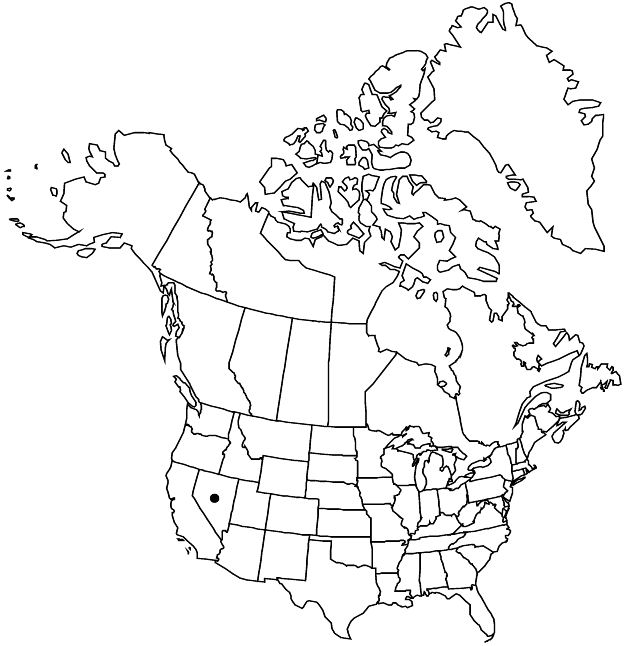Ivesia cryptocaulis
Lloydia 1: 130. 1939.
Plants green, diffusely matted. Stems prostrate to decumbent, 0.2–0.6 (–1) dm. Basal leaves tightly cylindric, 1–4 (–5) cm; sheathing base mostly not strigose abaxially; petiole 0.3–2 cm, hairs 0.5–1 mm; lateral leaflets 5–10 (–12) per side, ± overlapping, ± flabellate, 1–2.5 mm, incised to base or nearly so into 3–5 obovate to oval lobes, apex sometimes ± setose, surfaces loosely long-strigose, sparsely glandular; terminal leaflets indistinct. Cauline leaves 1 (–2); blade vestigial. Inflorescences 1–10-flowered, ± congested, 0.5–1.5 cm diam. Pedicels 3–7 (–10) mm. Flowers 6–9 mm diam.; epicalyx bractlets 5, lanceolate to narrowly oblong or narrowly ovate, 0.8–1.3 mm; hypanthium shallowly cupulate, ± 1 × 2–3 (–4) mm; sepals 1.5–2.3 mm, ± acute; petals yellow, oblanceolate to spatulate, 2–3.2 mm; stamens 5, filaments 0.9–1.2 mm, anthers yellow, oblong, 0.7–0.9 mm; carpels 6–10, styles 1–1.5 mm. Achenes greenish cream to light-brown, 1.4–1.8 (–2) mm, smooth, not carunculate.
Phenology: Flowering summer.
Habitat: Dry to moist limestone gravel, scree, or talus slopes and outcrops, subalpine conifer woodlands, alpine tundra communities
Elevation: 2500–3700 m
Discussion
Of conservation concern.
Ivesia cryptocaulis is known only from timberline and above in the Spring Mountains of Clark County. Plants differ from all others of the genus by having slender, elongate, diffuse caudex branches that ramify through its habitat of gravel, scree, and talus. The species is here provisionally included in sect. Setosae as a diffusely matted relative of I. shockleyi (as also suggested by D. D. Keck 1938); the ecarunculate seeds and relatively straight pedicels may indicate a greater similarity to I. pygmaea in sect. Ivesia.
Selected References
None.
Lower Taxa
"thin" is not a number."dm" is not declared as a valid unit of measurement for this property."dm" is not declared as a valid unit of measurement for this property."dm" is not declared as a valid unit of measurement for this property.
